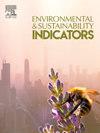城市河流修复中的利益相关者优先事项和导航障碍:来自德国和加纳的比较见解
IF 5.4
Q1 ENVIRONMENTAL SCIENCES
引用次数: 0
摘要
城市河流恢复是缓解洪水、气候适应能力和城市宜居性的关键自然解决方案(NbS)。虽然假定发达国家优先考虑生态改善和娱乐,而发展中国家侧重于减轻风险和社会经济发展,但经验验证仍然有限。本研究通过对德国慕尼黑的伊萨尔河和加纳库马西的阿博博河进行比较分析,解决了这些差距。利用参与式研讨会、SWOT分析和Kruskal-Wallis测试,我们研究了利益相关者的优先级如何不同,以及环境因素如何促进或限制城市河流恢复的实施和规模。调查结果揭示了共同的挑战,包括土地权属的复杂性、财政限制和治理障碍。然而,慕尼黑的利益相关者强调生物多样性和水质,反映了先进的生态目标,而库马西的利益相关者则考虑到城市的脆弱性和早期恢复工作,优先考虑洪水风险缓解和项目可行性。这些差异在一定程度上证实了共同的假设,但也突出了国家统计局实施阶段的影响。早期阶段的项目,如库马西的项目,侧重于降低风险,而成熟的项目,如慕尼黑的项目,则转向生态改善和娱乐。在库马西,娱乐也受到高度重视,而在慕尼黑则不那么重视,这表明在发展背景下,更广泛的利益相关者优先考虑。在这两种情况下,文化遗产和气候适应都没有得到充分的体现,也表明现有框架存在空白。我们建议发达国家将气候适应能力和成本效率结合起来,发展中国家将恢复与社会经济需求结合起来,加强机构能力,并将项目纳入更广泛的城市规划框架。分阶段协调的方法可能为长期成功提供一条可行的途径。本文章由计算机程序翻译,如有差异,请以英文原文为准。
Stakeholder priorities and navigating barriers in urban river restoration: Comparative insights from Germany and Ghana
Urban river restoration is a key nature-based solution (NbS) for flood mitigation, climate resilience and urban liveability. While developed countries are assumed to prioritise ecological enhancement and recreation and developing countries focus on risk mitigation and socio-economic development, empirical validation remains limited. This study addresses these gaps through a comparative analysis of the Isar River in Munich, Germany and the Aboabo River in Kumasi, Ghana. Using participatory workshops with SWOT analysis and Kruskal-Wallis testing, we examined how stakeholder priorities differ and how contextual factors enable or constrain the implementation and scaling of urban river restorations. Findings reveal shared challenges, including land tenure complexities, financial constraints and governance hurdles. However, Munich stakeholders emphasise biodiversity and water quality, reflecting advanced ecological objectives, while Kumasi stakeholders prioritise flood risk mitigation and project feasibility, given the city's vulnerability and early-stage restoration efforts. These differences partly confirm common assumptions but also highlight the influence of NbS implementation stages. Early-phase projects, like Kumasi's, focus on risk reduction, whereas mature projects, like Munich's, shift toward ecological enhancement and recreation. Recreation was also highly valued in Kumasi and less so in Munich and suggests broader stakeholder priorities in developing contexts. Cultural heritage and climate adaptation were underrepresented in both cases and signal gaps in existing frameworks. We recommend that developed countries integrate climate resilience and cost efficiency, while developing countries align restoration with socio-economic needs, strengthen institutional capacity and embed projects into broader urban planning frameworks. A phased, coordinated approach may offer a viable pathway for long-term success.
求助全文
通过发布文献求助,成功后即可免费获取论文全文。
去求助
来源期刊

Environmental and Sustainability Indicators
Environmental Science-Environmental Science (miscellaneous)
CiteScore
7.80
自引率
2.30%
发文量
49
审稿时长
57 days
 求助内容:
求助内容: 应助结果提醒方式:
应助结果提醒方式:


